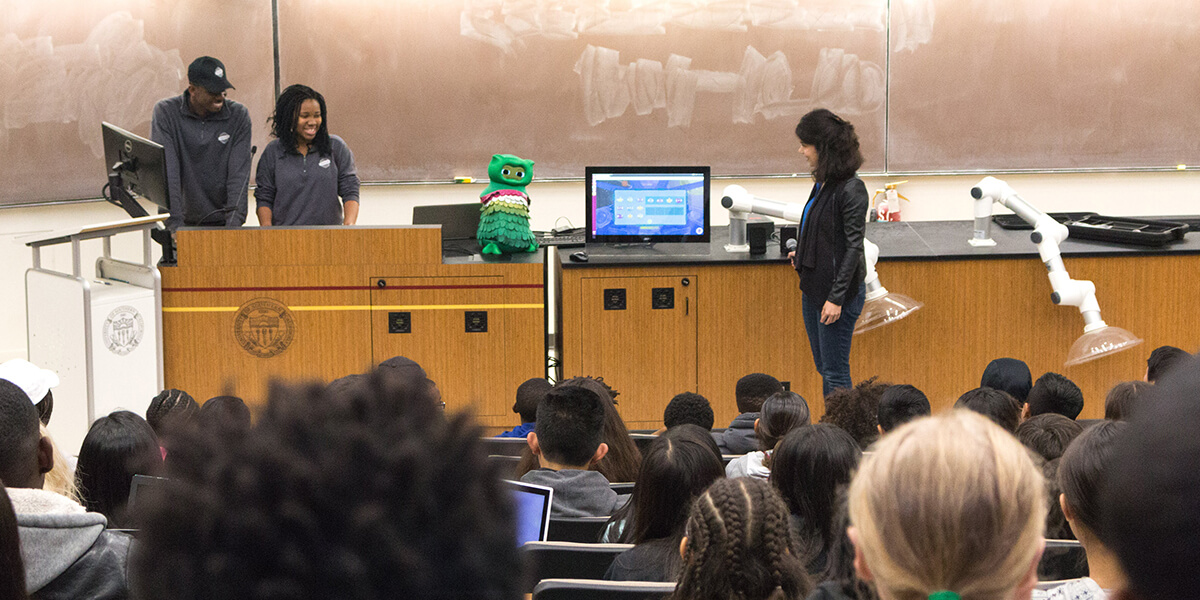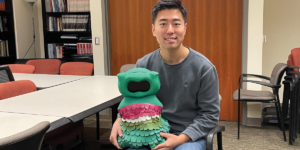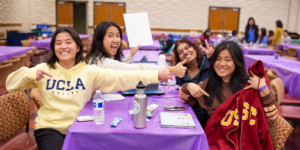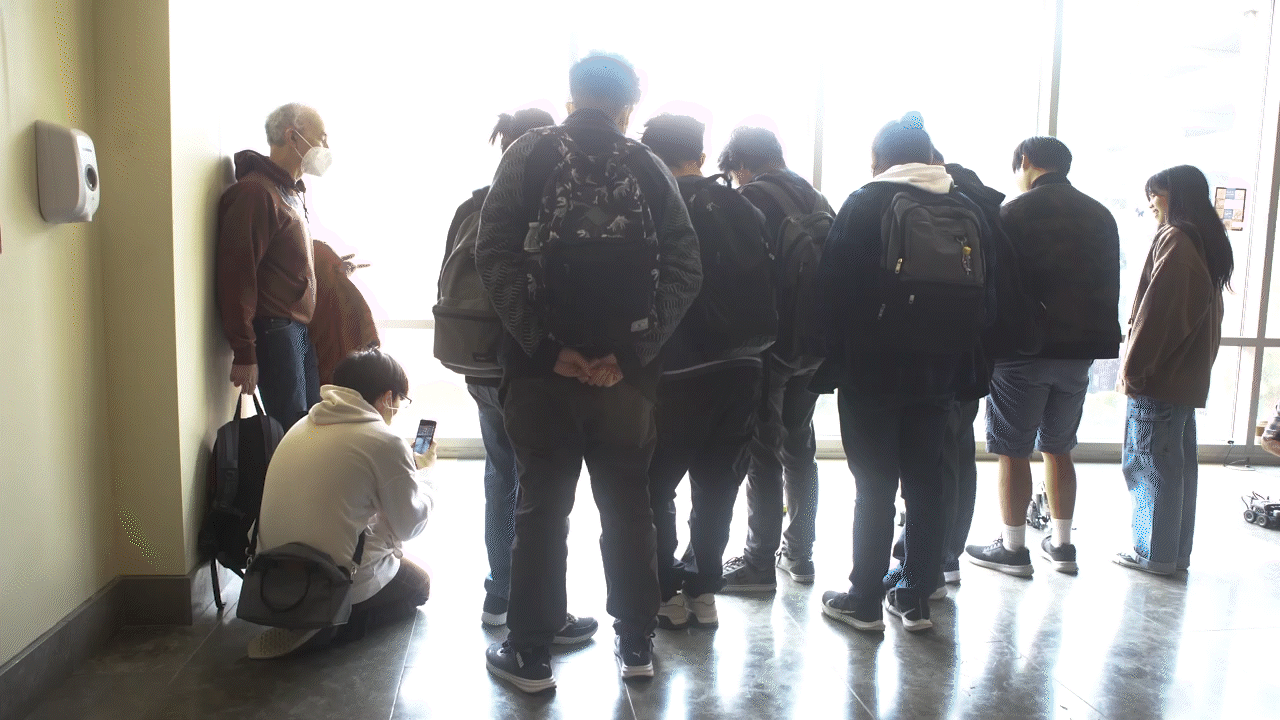
Leili Tavabi (right) shows students the innovative abilities of interactive robot, Kiwi, during the hackathon opening ceremonies. Photo by Ocean Ronquillo-Morgan
For students and faculty in STEM disciplines at USC, hackathons are part of the canvas. But for many children from underrepresented communities, hackathons are portals to a new world – a world several USC Viterbi students want to open up for these aspiring coders. Kourtney Chima, a computer science junior, and one of the many individuals creating change through the Hack SC Jr. program, got the inspiration for this event from a mom.
“I worked at professor Jeffrey Miller’s summer camps, and my co-worker’s mom pointed out how kids at camp often forget what they learn,” she said. “We wanted to create an event that would be a more memorable, hands-on experience for students,” Chima explained. Thus, the hackathon was born.
Chima and her team organized the first hackathon for fourth to eighth graders.
“The first time we weren’t sure how to structure a hackathon for kids,” Chima said. The first hackathon was four hours in length with only late elementary and middle school students participating.
“We realized kids in high school need this opportunity because it boosts their resume during the college application process,” Chima explained. After working this out, the Hack SC Jr. team extended the hackathon to eight hours and a wider demographic of students.

HackSC Jr. is bridging the gender and minority gap in tech’s future generation through the pre-college hackathon. Photo by Ocean Ronquillo-Morgan
Expanding the age range to include high schoolers, the Hack SC Jr. team drew in hundreds of applicants. More than 300 students from around L.A. came to the March 31st event. Many of these students come from historically underrepresented minorities in STEM fields.
“We were really interested in getting kids from underrepresented backgrounds involved,” said Chima who worked with CBCSA, the Center for Black Cultural and Student Affairs, to make this possible.
In addition to assembling a diverse set of students, the Hack SC Jr. team was also able to increase female participation, with girls making up half of the hackers. USC students Nathan Chang, Zach Izzard, Erica Jung, Ocean Ronquillo-Morgan, Osagie Ero, and Kaushik Tandon came on board to augment the team. These team members were among the 120 computer science student mentors working with the teams, ensuring the students had an unforgettable hacking experience.
The opening ceremony was led by graduate student Leili Tavabi, a researcher from the USC Interaction Lab. Tavabi wowed the kids by showing them the lab’s latest creation: a dynamic, birdlike robot named Kiwi. Kiwi is mainly used to interact with children with learning disabilities and autism, though the diverse crowd of children were in awe of the robot’s lifelike persona and interactive abilities.
“Tangible technologies like robots are a great means of getting young kids excited about technology and a good way of introducing them to programming,” Tavabi said.
Following the welcome and introduction of Kiwi, the attendees were split up into age-specific teams and let loose on the coding. Many designed video games, and the day culminated in several teams winning prizes.
“Three teams won drones, two won VR headsets, and one team won Brainstrings sponsored by Facebook,” Chima said. The prizes were a way to spark the passions of the students and hopefully urge them to continue in their pursuit of a possible career in STEM. The hands-on nature of the event allowed the children to gain a greater sense of accomplishment and fulfillment.
Hack SC Jr. is currently partnering with VAST, USC’s K-12 outreach program to host STEM workshops, like USC’s very own Robotics Open House, for children from underrepresented communities.
Published on April 25th, 2018
Last updated on April 25th, 2018










